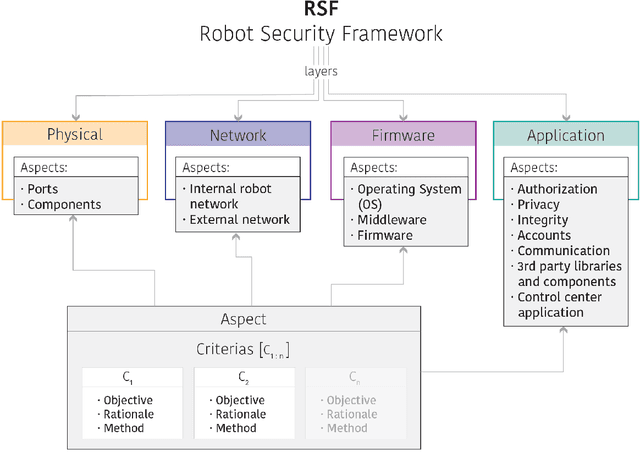Andreas Peter
How to Securely Shuffle? A survey about Secure Shufflers for privacy-preserving computations
Jul 02, 2025Abstract:Ishai et al. (FOCS'06) introduced secure shuffling as an efficient building block for private data aggregation. Recently, the field of differential privacy has revived interest in secure shufflers by highlighting the privacy amplification they can provide in various computations. Although several works argue for the utility of secure shufflers, they often treat them as black boxes; overlooking the practical vulnerabilities and performance trade-offs of existing implementations. This leaves a central question open: what makes a good secure shuffler? This survey addresses that question by identifying, categorizing, and comparing 26 secure protocols that realize the necessary shuffling functionality. To enable a meaningful comparison, we adapt and unify existing security definitions into a consistent set of properties. We also present an overview of privacy-preserving technologies that rely on secure shufflers, offer practical guidelines for selecting appropriate protocols, and outline promising directions for future work.
Privacy-Preserving Vertical K-Means Clustering
Apr 10, 2025



Abstract:Clustering is a fundamental data processing task used for grouping records based on one or more features. In the vertically partitioned setting, data is distributed among entities, with each holding only a subset of those features. A key challenge in this scenario is that computing distances between records requires access to all distributed features, which may be privacy-sensitive and cannot be directly shared with other parties. The goal is to compute the joint clusters while preserving the privacy of each entity's dataset. Existing solutions using secret sharing or garbled circuits implement privacy-preserving variants of Lloyd's algorithm but incur high communication costs, scaling as O(nkt), where n is the number of data points, k the number of clusters, and t the number of rounds. These methods become impractical for large datasets or several parties, limiting their use to LAN settings only. On the other hand, a different line of solutions rely on differential privacy (DP) to outsource the local features of the parties to a central server. However, they often significantly degrade the utility of the clustering outcome due to excessive noise. In this work, we propose a novel solution based on homomorphic encryption and DP, reducing communication complexity to O(n+kt). In our method, parties securely outsource their features once, allowing a computing party to perform clustering operations under encryption. DP is applied only to the clusters' centroids, ensuring privacy with minimal impact on utility. Our solution clusters 100,000 two-dimensional points into five clusters using only 73MB of communication, compared to 101GB for existing works, and completes in just under 3 minutes on a 100Mbps network, whereas existing works take over 1 day. This makes our solution practical even for WAN deployments, all while maintaining accuracy comparable to plaintext k-means algorithms.
Automated Retrieval of ATT&CK Tactics and Techniques for Cyber Threat Reports
Apr 29, 2020



Abstract:Over the last years, threat intelligence sharing has steadily grown, leading cybersecurity professionals to access increasingly larger amounts of heterogeneous data. Among those, cyber attacks' Tactics, Techniques and Procedures (TTPs) have proven to be particularly valuable to characterize threat actors' behaviors and, thus, improve defensive countermeasures. Unfortunately, this information is often hidden within human-readable textual reports and must be extracted manually. In this paper, we evaluate several classification approaches to automatically retrieve TTPs from unstructured text. To implement these approaches, we take advantage of the MITRE ATT&CK framework, an open knowledge base of adversarial tactics and techniques, to train classifiers and label results. Finally, we present rcATT, a tool built on top of our findings and freely distributed to the security community to support cyber threat report automated analysis.
Introducing the Robot Security Framework (RSF), a standardized methodology to perform security assessments in robotics
Jun 11, 2018



Abstract:Robots have gained relevance in society, increasingly performing critical tasks. Nonetheless, robot security is being underestimated. Robotics security is a complex landscape, which often requires a cross-disciplinar perspective to which classical security lags behind. To address this issue, we present the Robot Security Framework (RSF), a methodology to perform systematic security assessments in robots. We propose, adapt and develop specific terminology and provide guidelines to enable a holistic security assessment following four main layers (Physical, Network, Firmware and Application). We argue that modern robotics should regard as equally relevant internal and external communication security. Finally, we advocate against "security by obscurity". We conclude that the field of security in robotics deserves further research efforts.
 Add to Chrome
Add to Chrome Add to Firefox
Add to Firefox Add to Edge
Add to Edge